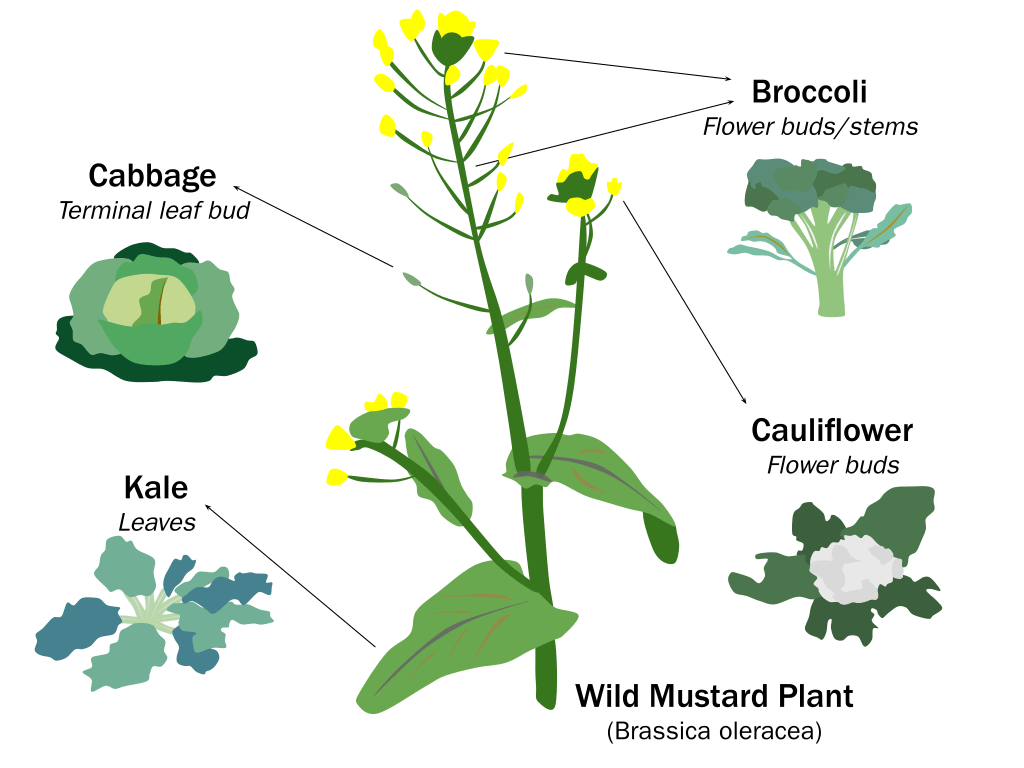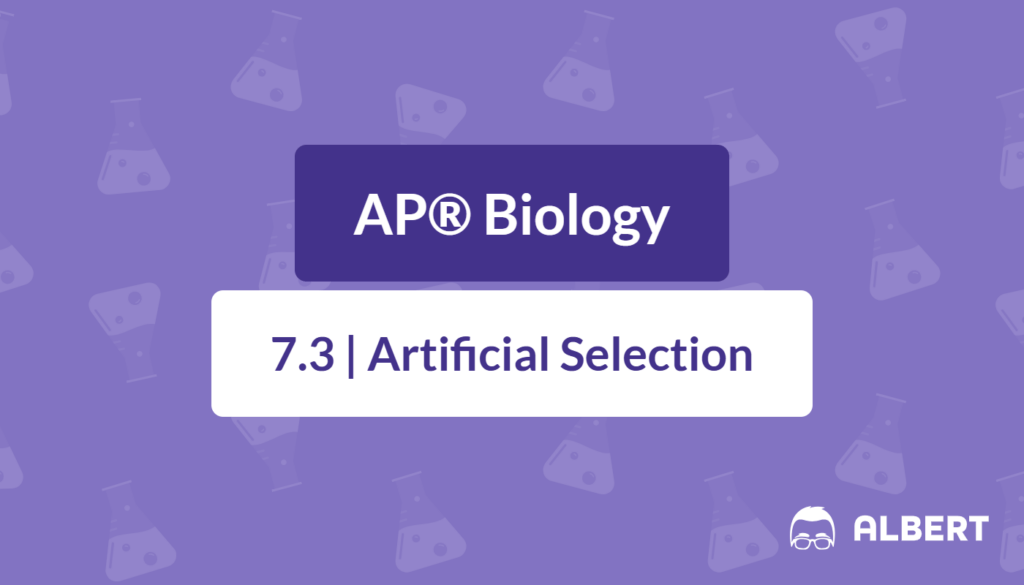What We Review
Introduction
Artificial selection—also known as selective breeding—has shaped our world for centuries, influencing everything from the corn on our plates to the loyal dogs that share our homes. In an AP® Biology context, understanding this concept matters because it connects directly to key evolutionary concepts, highlights human impact on species diversity, and provides a gateway to discussing broader ideas like convergent evolution. This post will guide you through the basics of artificial selection, contrast it with natural selection, and show how humans continue to shape the genetic variation of species around us.
What Is Artificial Selection?
Artificial selection is a process whereby humans deliberately choose certain traits in organisms and breed individuals displaying those characteristics to produce offspring with similar or enhanced traits. This differs from natural selection, where the environment (not humans) determines which traits are most beneficial for survival and reproduction. In artificial selection, human preferences or needs drive which traits get passed on.
For example, dogs descended from wolves, but centuries of selective breeding gave rise to breeds as different as the Chihuahua and the Great Dane. Additionally, modern corn is a drastically altered descendant of teosinte, a wild grass. Humans continuously crossbred plants with desirable traits—like size, flavor, or drought-resistance—resulting in today’s robust crops.

Historical Context of Artificial Selection
Throughout history, farmers and breeders intuitively recognized that traits could be enhanced or eliminated in plants and animals through selective breeding. Charles Darwin later formalized our understanding of this process. In “On the Origin of Species,” Darwin used artificial selection in pigeons as a key example to illustrate how selection pressures can alter populations over generations. Meanwhile, Gregor Mendel’s work on pea plants provided the genetic framework behind how traits are passed from parents to offspring. These foundational studies inform the modern understanding of both artificial and natural selection.
How Humans Affect Variation in Populations
When humans selectively breed organisms for specific traits—such as faster racehorses or higher-yield wheat—they directly affect genetic variation within a population. Some alleles (gene variants) become more common, while others decrease in frequency or even vanish entirely.
Case Studies: From Domestication to Modern Breeding
- Dogs: Early humans bred wolves to cultivate more docile, helpful canines. Over time, selecting for different traits produced modern dog breeds with vastly distinct appearances, behaviors, and size ranges.
- Agriculture & Livestock: Artificial selection in crops like corn, wheat, and rice has boosted yield, drought tolerance, and disease resistance. Similarly, breeding livestock with faster growth or leaner meat benefits farmers but can reduce the genetic diversity within these animal populations.
- Benefits and Drawbacks: While artificial selection has advanced food production and companion animals, it can also lead to genetic bottlenecks. When one trait (e.g., large fruit) is the sole focus, other valuable traits (e.g., disease resistance) may be lost, ultimately reducing a population’s adaptability.
Artificial Selection vs. Natural Selection
Artificial Selection is defined as trait selection driven by human desire—breeding individuals that exhibit desired traits to reinforce them in subsequent generations. While Natural Selection states that organisms better adapted to their environment tend to survive and produce more offspring. Environmental pressures, not human choices, shape the traits.
Mechanisms of Each Process
- In artificial selection, humans actively intervene by deciding which individuals breed.
- In natural selection, environmental factors (predators, climate, competition, etc.) determine which traits aid survival.
Implications for Diversity
Artificial selection can lead to decreased genetic diversity if breeders consistently select the same desirable traits. By contrast, natural selection often maintains or increases diversity in ever-changing environments, where various traits might be advantageous.
Convergent Evolution
Convergent evolution is when species from different evolutionary branches develop similar traits due to comparable environmental pressures or similar niches. It illustrates the power of environmental conditions to shape organisms in parallel ways, even if they are distantly related.
Examples of Convergent Evolution include:
- Bats and Birds: Both can fly but evolved flight independently; they share similarities (wings) despite different evolutionary histories.
- Dolphins and Sharks: Both have streamlined bodies adapted to aquatic environments, but one is a mammal and the other is a fish. Their resemblance reflects a common solution to swimming efficiently in water.
The Relationship Between Environment and Evolution
Artificial selection offers a direct, hands-on example of evolutionary principles. Changes in the environment, including human intervention, still drive which traits succeed. When humans alter an ecosystem—whether by farming, selective breeding, or habitat changes—we actively shift the selective pressures on species. Over many generations, these pressures shape populations in significant ways. In some cases, human-induced changes can mimic natural selective pressures, while in others, they replace them almost entirely, drastically reshaping gene pools and affecting biodiversity.
VIII. Practice Questions
Multiple-Choice Questions
- Which of the following is an example of artificial selection?
- A. The development of antibiotic resistance in bacteria
- B. Polar bears evolving white fur in Arctic environments
- C. Farmers breeding cows to produce more milk
- D. Cacti evolving spines in desert conditions
- How does artificial selection typically affect genetic variation in a population?
- A. Increases diversity by introducing new alleles
- B. Has no effect on genetic variation
- C. Decreases genetic variation by favoring specific traits
- D. Maintains stable allele frequencies over time
Short Answer Question
- Briefly explain how convergent evolution differs from artificial selection. Provide one example of convergent evolution to support your explanation.
Conclusion
Artificial selection is a powerful process that reveals how quickly traits within a population can shift. By comparing artificial and natural selection, we see both the efficacy of human-driven change and nature’s ability to marvelously adapt. As you delve deeper into these concepts for your AP® Biology studies, remember the broader implications: humans not only affect individual species but entire ecosystems. As we continue to innovate in agriculture, animal husbandry, and biotechnology, understanding artificial selection remains incredibly relevant.
By understanding both artificial and natural selection, you gain insight into the processes that underlie evolution across the living world. Questions about the ethical and ecological impacts of artificial selection invite us all to think critically about how we shape—and are shaped by—the diversity of life around us. Good luck as you continue your exploration of these fascinating concepts in AP® Biology!
Sharpen Your Skills for AP® Biology
Are you preparing for the AP® Biology test? We’ve got you covered! Try our review articles designed to help you confidently tackle real-world math problems. You’ll find everything you need to succeed, from quick tips to detailed strategies. Start exploring now!
Need help preparing for your AP® Biology exam?
Albert has hundreds of AP® Biology practice questions, free response, and full-length practice tests to try out.








